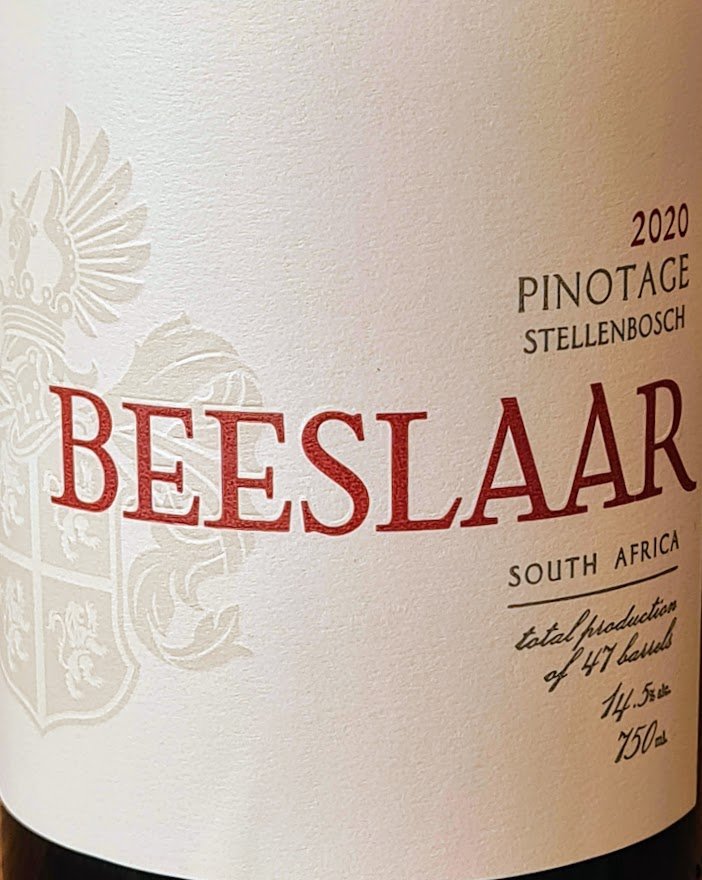Beeslaar Pinotage 2020
By Christian Eedes, 17 June 2022

3
 Abrie Beeslaar relates that 2020 was the first vintage where the effects of the well-documented Western Cape drought were no longer as keenly felt, good rains in the autumn of 2019 ensuring even budding and growth.
Abrie Beeslaar relates that 2020 was the first vintage where the effects of the well-documented Western Cape drought were no longer as keenly felt, good rains in the autumn of 2019 ensuring even budding and growth.
Beeslaar is, of course, winemaker at Kanonkop where Pinotage grows on decomposed granite. Grapes for his own wine from this variety come from a Simonsberg vineyard planted in 1993 on shale.
His 2020 has inviting aromatics of rose, red and black cherry plus hints of vanilla and baking spice while the palate appears medium bodied although hardly underdone (alcohol is 14.83%). Excellent fruit integrity, fresh acidity and fine-grained tannins makes for a wine that initially appears quite succulent and luscious but finishes long and gently savoury. Supple and harmonious, this already drinks very well although has in the inherent structure to last a good long while. Price: R620 a bottle.
CE’s rating: 95/100.
Check out our South African wine ratings database.







Gareth | 21 June 2022
Hi Christian,
I’ve been buying and cellaring Abrie’s pinotage since the 2014 vintage. However, not often being in the country means that I have not had much chance to sample it (the last being the 2014, and some years back now).
How do you feel this wine will evolve with time and when would you estimate might be the optimal drinking window?
(Personally I enjoy mild to moderate tertiary character, but also enjoy wines when a bit younger)
Thanks!
PS: Have you tried his Chard?
Greg Sherwood | 22 June 2022
Not had the 2014 recently, but the maiden Beeslaar 2012 is still drinking beautifully and is very vibrant and youthful. A good rule of thumb for all SA wines is drink them at 10 years old and you will normally enjoy a nice balance between fruit intensity and tertiary development. But 2014 was a cool wet year and tasting the Kanonkop Black Label 2014 recently, it was more evolved than some of the other older vintages, so probably don’t leave too long before enjoying.
Christian Eedes | 22 June 2022
Hi Gareth, I would be a little more conservative than Mr Sherwood in that I think SA reds from the 1990s and 2000s tended to peak at around eight years from vintage (10 years and longer usually sees them in some sort of decline). I would qualify this by saying firstly that winemaking has only gotten better so that I suspect the wines from the 2010s will generally last longer and secondly that vintage variation is only becoming more pronounced – the best of 2015 and 2017 are destined to last a long time whereas 2016 was generally a vintage for early drinking. Haven’t had that Beeslaar Chardonnay…